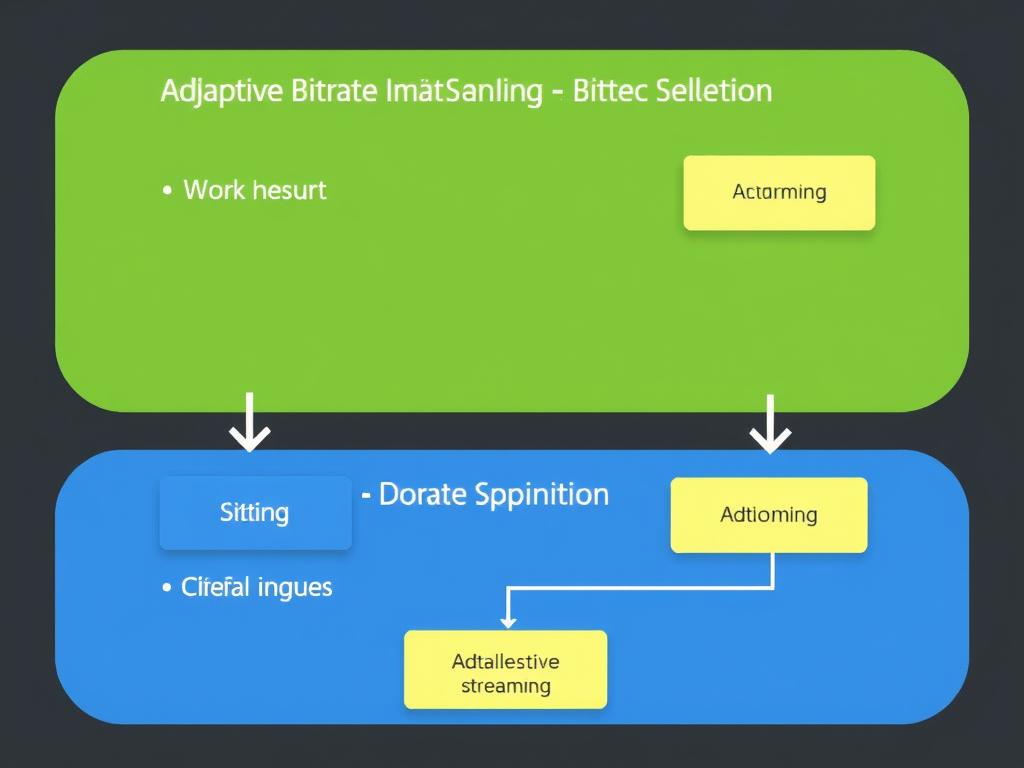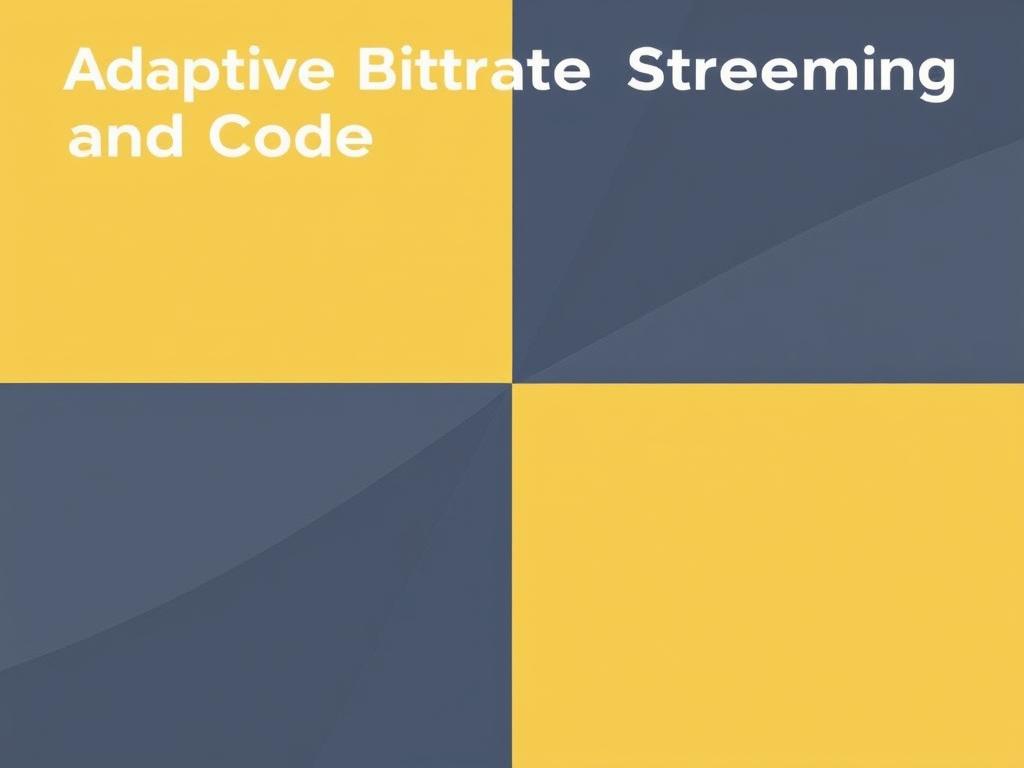Understanding Adaptive Bitrate Streaming

Adaptive Bitrate Streaming, commonly known as ABR streaming, has revolutionized the way we consume videos on the internet. Imagine watching your favorite movie or live event, and the video quality adjusts seamlessly to your internet speed without any annoying buffering. That’s the power of ABR streaming. This technology dynamically changes the video quality in real-time, ensuring viewers get the best possible experience based on their current network conditions. It works by encoding the video at multiple bitrates and resolutions, then switches between these streams on the fly depending on the user’s bandwidth and device capabilities.
ABR streaming is crucial in today’s digital landscape because internet speeds and device capabilities vary widely. Whether you’re on a mobile device using cellular data or a desktop connected to fiber-optic internet, ABR streaming optimizes playback for smoothness and quality. It effectively solves the problem of stalls and buffering, which have been the bane of video streaming for years.
The Importance of Codec Selection in Streaming

While ABR handles the adaptive delivery of video, codec selection is equally important in streaming technology. A codec is a piece of software or hardware used to encode and decode digital video. The codec determines how efficiently video data is compressed, affecting both quality and bandwidth consumption.
Choosing the right codec is a balancing act. You want to provide the highest video quality while minimizing the amount of data needed to deliver that quality. Popular codecs like H.264 have dominated the streaming world for years due to their compatibility and good compression efficiency. However, newer codecs like H.265 (HEVC), VP9, and the latest AV1 promise better compression rates, meaning they can deliver the same quality at lower bitrates, which is perfect for ABR streaming environments where bandwidth can fluctuate.
How Adaptive Bitrate Streaming and Codec Selection Work Together
To get the most out of streaming services, adaptive bitrate streaming and codec selection must work hand in hand. The process begins during video encoding, where content is compressed using a selected codec at different bitrates and resolutions. These multiple versions form a “manifest” or playlist, which the streaming client uses to switch streams seamlessly.
For example, suppose you’re watching a movie in 4K on a smart TV. Your connection starts out strong, streaming the highest bitrate encoded with a modern codec like AV1 for maximum efficiency. Suddenly, your network slows down when someone else in your home begins streaming as well. Your device then automatically switches to a lower bitrate stream encoded in the same codec, preserving smooth playback without noticeable drops in visual quality.
Popular Codecs for Streaming: A Comparative Overview
Choosing a codec involves considering factors such as compression efficiency, device support, licensing costs, and latency. Here’s a simple table comparing popular codecs used today in the context of adaptive bitrate streaming:
| Codec | Compression Efficiency | Device Compatibility | Licensing | Best Use Case |
|---|---|---|---|---|
| H.264 (AVC) | Moderate | Very High (almost universal) | Royalty-required | Broad compatibility, legacy support |
| H.265 (HEVC) | High (about 50% better than H.264) | Growing (modern devices, some smart TVs) | Royalty-required, complex licensing | 4K streams, bandwidth-sensitive environments |
| VP9 | High | Good (web browsers, Android devices) | Royalty-free | YouTube streaming, web video |
| AV1 | Very High (better than H.265 and VP9) | Emerging (new devices, browsers] | Royalty-free | Future-proof, high efficiency |
Implementing Adaptive Bitrate Streaming: What You Need to Know

Implementing adaptive bitrate streaming involves several steps, from media preparation to delivery. Let’s break down the process:
- Video Encoding: The original video content is encoded into multiple versions at different bitrates and resolutions using selected codecs.
- Manifest Creation: A manifest file or playlist (like M3U8 for HLS, or MPD for DASH) describes these versions and enables client devices to switch streams during playback.
- Content Delivery: A content delivery network (CDN) is used to distribute these multiple video files efficiently across the globe.
- Dynamic Stream Switching: The media player on the user’s device continually monitors network quality and switches between streams accordingly.
In addition to these technical steps, it’s essential to consider codec compatibility across different devices, player support, and bandwidth constraints. Many streaming platforms provide automatic codec and bitrate selection to optimize user experience.
Advantages of Adaptive Bitrate Streaming and Smart Codec Choice
Using adaptive bitrate streaming and intelligent codec selection offers numerous benefits for both content providers and users:
- Reduced Buffering: Viewers enjoy uninterrupted playback even with fluctuating network conditions.
- Optimized Bandwidth Usage: Content providers reduce bandwidth costs by serving only the bitrate needed.
- Enhanced Quality: Streaming at the highest possible quality given subscribers’ devices and connectivity.
- Better Device Compatibility: Selecting appropriate codecs ensures smooth playback across a broad range of devices, from smartphones to smart TVs.
Challenges and Considerations
Despite the many advantages, several challenges arise when implementing adaptive bitrate streaming and codec selection:
- Encoding Overhead: Creating multiple bitrate versions increases storage and encoding costs.
- Latency: Live streaming with adaptive bitrates and complex codecs can introduce delays.
- Device Compatibility: Older devices may not support newer codecs like AV1 or HEVC.
- Licensing Challenges: Some codecs require licensing fees that might complicate deployment and increase costs.
Addressing these challenges requires careful planning and infrastructure investment. Most streaming providers balance codec selection by offering fallback streams in legacy codecs or using hybrid approaches.
Future Trends in Adaptive Bitrate Streaming and Codec Evolution
As internet infrastructure continues to improve and users demand higher resolution content, adaptive bitrate streaming combined with evolving codecs will remain at the forefront of digital video delivery. Emerging technologies to watch include:
- Machine Learning-Optimized Encoding: Using AI algorithms to tailor encoding parameters dynamically for individual streams.
- 5G and Beyond: High-speed mobile networks enable higher bitrate streams on mobile devices, pushing codec efficiency requirements even further.
- Real-time Adaptive Streaming: Reducing latency for live broadcasts while maintaining ABR benefits.
- Wider Adoption of AV1: As device compatibility grows, AV1’s royalty-free nature and superior efficiency will drive mainstream use.
These advancements promise to make video streaming better than ever, delivering ultra-high resolution content without sacrificing smooth playback.
Conclusion
Adaptive bitrate streaming and codec selection form the backbone of modern video delivery, enabling smooth, high-quality playback across diverse devices and network conditions. By encoding videos in multiple bitrates using efficient codecs like H.264, H.265, VP9, or AV1, streaming platforms can adjust to individual users’ internet speeds and device capabilities in real time. Although challenges like encoding overhead, latency, and codec compatibility exist, ongoing technological advancements and smart engineering choices continue to enhance streaming experiences worldwide. Whether you’re binge-watching your favorite show or catching a live game, adaptive bitrate streaming combined with thoughtful codec selection ensures that your video plays smoothly, looking great no matter where you are or what device you use.